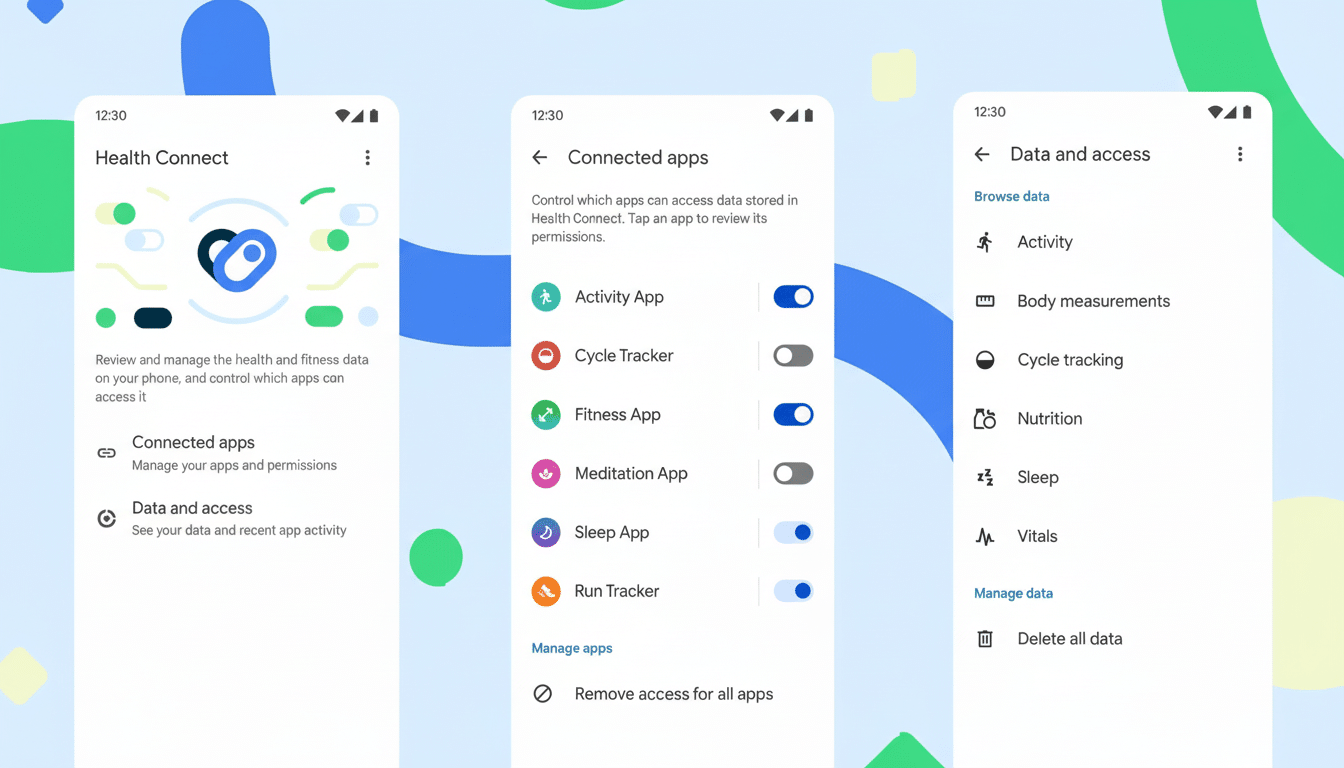If you’ve seen a new prompt on your Android phone to “see your health data across apps,” that’s Google quietly nudging you to switch Health Connect on. No, it’s not spam, and no, it’s not a new fitness app. A system-level hub that is designed to let your health and fitness apps communicate with each other safely.
This push is strategic. Health Connect has existed quietly for some time, but it has been slow to catch on in part because many users just do not know that it’s already on their phones. With a clear call to set it up ready at hand, Google is addressing discoverability while also finally getting the ball rolling for more comprehensive monitoring options overall across Android, such as native step-count tracking — without requiring you to commit to any one brand’s ecosystem.
- What Health Connect Really Does on Your Android Phone
- Why Google Is Moving Now to Promote Health Connect
- How the New Health Connect Prompts Work on Android
- What It Means for Users and Developers on Android
- Privacy and Control in Google’s Health Connect Hub
- The Bigger Picture for Android’s Unified Health Data

What Health Connect Really Does on Your Android Phone
Health Connect would serve as a central switchboard for your wellness data. It allows apps to share specific types of data (steps, heart rate, sleep, workouts, menstrual cycles, and nutrition) in one privacy hub. You choose the apps that have permission to read or write which data, and you can change your mind any time.
Importantly, Health Connect is built into Android as a system component and updates through Google Play — we can ship new capabilities without requiring a full OS upgrade. Google has said the ecosystem of what it can work with includes over 100 compatible apps, including big names like Fitbit, Samsung Health, Oura, MyFitnessPal, Strava and Peloton as well as Withings Health Mate. The more apps you have, the more delightful that interoperability is.
Why Google Is Moving Now to Promote Health Connect
Health Connect is not something most people ever find on their own. It’s not emphasized during phone setup, and the entry point in Settings is hard to find. Many third-party apps even bury Health Connect options inside menus, so the benefits of this system often go unseen unless you know where to find them.
There’s a market reality, too. Analyst shops like IDC count hundreds of millions of wearables shipped each year, but on Android data continues to splinter between brands and apps. Apple has employed its Health app to aggregate this data on iPhone for some time. Google wants more people to be actively toggling the Health Connect switch on, so that it can deliver coherent services across different screens and so that Android’s health story won’t feel like a complete mess compared to its rival.
How the New Health Connect Prompts Work on Android
The new notification launches you directly into Health Connect with a big fat banner to begin setup. Tap Set up, and you will see a list of installed apps that can connect. Once you say yes to one app, you will be invited to hook up others, then choose exactly what kind of data is shared in which direction.
Importantly, since Health Connect ships as a distributed package provider in System, Google can add those prompts and onboarding flows via a Play system update. That means the experience can get better quickly on a big swath of phones, regardless of what company makes each or which version of an OS they run, as long as they support the module.

What It Means for Users and Developers on Android
For users, the benefit is straightforward: fewer data silos and more context. Your Peloton rides can pair up with your Oura sleep scores, and weight logs from a Withings scale can appear where you actually meal plan. Set a step goal on one app and let others track progress without having to replicate sensors or background sync jobs.
Fragmentation is simplified for developers by Health Connect. Rather than write custom integrations per partner and poll the phone’s sensors individually, apps can work with a consistent schema and permissions layer. Runkeeper already offers Google Fit integration, and Google’s Android health team has indicated native step tracking through the platform, which will hopefully save you from pulling those bottom-of-the-barrel data usage permissions (and, somewhat, battery life).
Privacy and Control in Google’s Health Connect Hub
Health information is sensitive, so the system is designed with explicit, granular control. By default, data is stored on-device. Apps must ask for read or write access to predetermined categories, and you can take away their access at any time by going into Settings. You’ll also see which apps looked at what data and when, creating an auditable trail.
No app can pull in data through Health Connect without your permission, Google says. Centralizing access in one location is intended to be more transparent than being prompted by scattered, one-off prompts and provides you with a single place to lock things down if your app mix changes.
The Bigger Picture for Android’s Unified Health Data
This is not only a matter of flipping on another toggle switch. So it’s about bringing together Pixel phones, Fitbit devices, Wear OS watches and third-party services around a common data layer that puts privacy first. And that foundation is essential for more advanced features such as consolidated step counting, smarter coaching capabilities and cross-device insights.
In proactively surfacing Health Connect, Google is addressing a discoverability gap and advancing a long-term strategy: make Android’s health ecosystem work together by default. If you are using more than one fitness app or device, that little push is the simplest method to get them all working smarter together.

